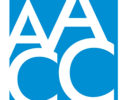Improving FAFSA completion rates
By AACC 21st Century Center Staff
November 17, 2016
Changes to the FAFSA form and increased outreach are some ways the Education Department is working to increase FAFASA completion rates.
Nearly 40 percent of federal aid-eligible students don’t complete the FAFSA. Why? Many students don’t think they’re eligible for aid. The U.S. Department of Education (ED) has increased outreach to clear up myths like this.
The Education Department has deployed outreach coordinators to school districts where FAFSA completion rates were especially low. ED also conducts webinars not only for future college students and their parents, but also for college counselors and access advisors. There are FAFSA office hours monthly, in which people can have questions answered via Facebook and Twitter. There’s outreach to community organizations, too, in order to reach nontraditional students.
There’s also an online financial aid toolkit for counselors and access advisors. It consolidates federal student aid resources. The toolkit has updates about changes to the FAFSA or loan repayment programs. There’s basic financial aid information and a searchable library of resources—many available in English and Spanish.
Of course, the big news this year was that the FAFSA got a makeover. The form is now available on Oct. 1 (rather than Jan. 1), it’s shorter and, using a data retrieval tool, it pulls in tax information from the prior year.
FAFSA completion this October was up by about 6 percent for the first two weeks of filing, compared to the first two weeks of filing the previous year, when it opened Jan. 1. Students may still have to wait a long time before they find out just how much aid they’re getting, though. Colleges and universities traditionally don’t send out award packages until the spring.
How are you ensuring students complete the FAFSA? Chime in on LinkedIn.



